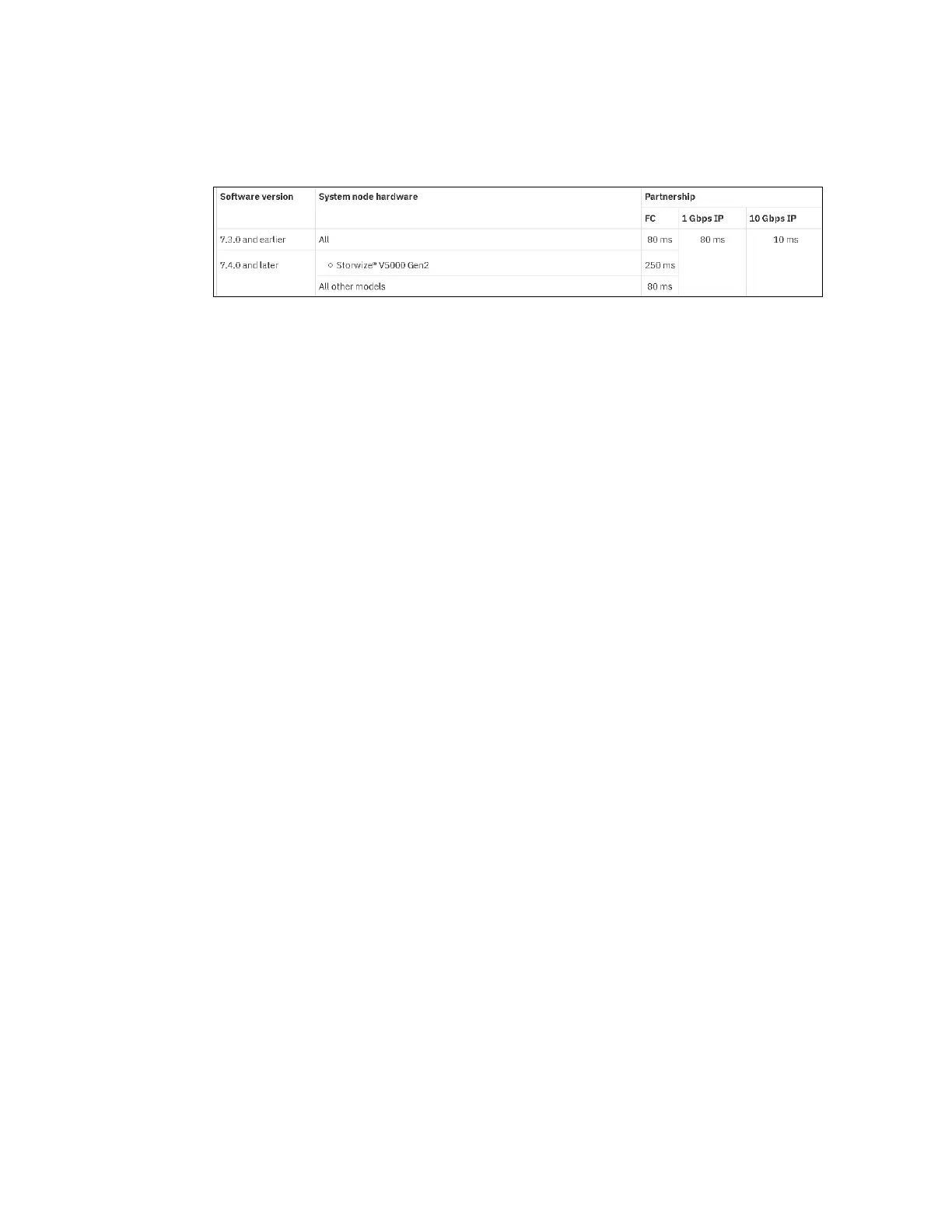570 Implementing the IBM Storwize V5000 Gen2 with IBM Spectrum Virtualize V8.1
Figure 10-82 lists the maximum round-trip latency. This restriction applies to all variant of
remote mirroring. More configuration requirements and guidelines apply to systems that
perform remote mirroring over extended distances, where the round-trip time is > 80 ms.
Figure 10-82 Supported Remote mirroring latency
10.7.11 Global Mirror features
IBM Spectrum Virtualize Global Mirror supports the following features:
Asynchronous remote copy of volumes that are dispersed over metropolitan-scale
distances.
The IBM Spectrum Virtualize implements the Global Mirror relationship between a volume
pair, with each volume in the pair being managed by an IBM SAN Volume Controller or
IBM Storwize system running IBM Spectrum Virtualize.
The IBM Storwize V5000 Gen2 supports intracluster Global Mirror where both volumes
belong to the same system (and I/O Group).
The IBM Storwize V5000 Gen2 intercluster Global Mirror in which each volume belongs to
its separate IBM Storwize V5000 Gen2 system. An IBM Storwize V5000 Gen2 system can
be configured for partnership with 1 - 3 other systems. For more information about IP
partnership restrictions, see 10.6.3, “IP partnership limitations” on page 552.
Intercluster and intracluster Global Mirror can be used concurrently, but not for the
same volume.
The IBM Storwize V5000 Gen2 system does not require a control network or fabric to be
installed to manage Global Mirror. For intercluster Global Mirror, the IBM Storwize V5000
Gen2 system maintains a control link between the two systems. This control link is used to
control the state and to coordinate the updates at either end. The control link is
implemented on top of the same FC fabric connection that the IBM Storwize V5000 Gen2
system uses for Global Mirror I/O.
The IBM Storwize V5000 Gen2 system implements a configuration model that maintains
the Global Mirror configuration and state through major events, such as failover, recovery,
and resynchronization, to minimize user configuration action through these events.
The IBM Storwize V5000 Gen2 system implements flexible resynchronization support,
enabling it to resynchronize volume pairs that experienced write I/Os to both disks, and to
resynchronize only those regions that changed.
An optional feature for Global Mirror is a delay simulation to be applied on writes that are
sent to auxiliary volumes. It is useful in intracluster scenarios for testing purposes.
Colliding writes
Before V4.3.1, the Global Mirror algorithm required that only a single write is active on any
512-byte logical block address (LBA) of a volume. If a further write is received from a host
while the auxiliary write is still active (even though the master write might complete), the new
host write is delayed until the auxiliary write is complete. This restriction is needed if a series
of writes to the auxiliary must be tried again (which is called
reconstruction). Conceptually,
the data for reconstruction comes from the master volume.

